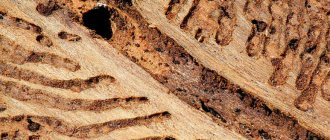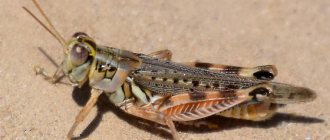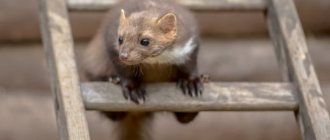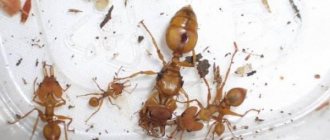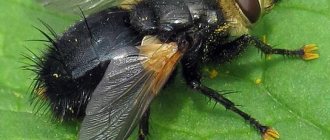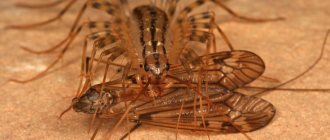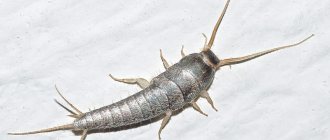At the beginning of winter, with the first frosts, mice, driven by hunger and cold, begin to invade human habitation. Mice in the house are always a huge headache for owners. They not only spread dangerous infections and announce their presence with a peculiar mouse odor, but also damage building structures, communications, and furniture. In this article we will look at:
- Why do mice try to get into the house?
- Mice in a private house: what wall material do rodents prefer?
- What to do to prevent mice from entering your home?
- How to get rid of mice in the house.
Mice in a private house
Hunger and cold drive mice into human homes. In summer, rodents can feed in fields and vegetable gardens, and with the onset of frost they run to where there are food reserves.
Mice have an excellent sense of smell; they can sense food at a distance of two kilometers.
A bag of flour in the pantry, bags of cereal in the kitchen cabinet... All this is like a magnet for mice.
And if the house is not protected from rodents at the construction stage, nothing and no one can stop the mouse that is trying to get into the house.
In addition to the smell of food, human housing attracts mice due to heat leaks.
The better the house is insulated, the better the heat is contained and the less it leaks out, the less it attracts rodents.
There is such a recommendation: with the onset of winter, it is good to heat the house and check it with a thermal imager. Places of heat leaks will usually be entry points for mice into the house. It is important to fix leaks as quickly as possible.
Typically, several large family mouse colonies (a male, several females and cubs) live in one private house. In a heated house with artificial lighting, mice cease to keep themselves within the boundaries determined by nature: they breed all year round (and not just in summer), they can be active at any time of the day (and not just at night), etc.
Over the course of a year, a female house mouse produces on average about 10 litters of 3-12 cubs each.
And all this horde of mice is constantly gnawing on something. Mice cannot do otherwise: the incisors of these rodents grow throughout their lives, and they must constantly grind them down so as not to die.
Mice in the house gnaw through plastic pipes and wiring, get into household appliances and cause short circuits, damage walls, floors, furniture...
Signs that you have a rodent infestation
Mice usually leave clear signs of their presence in a person’s home. They may rustle or squeak at night and run from place to place. The owners also discover an unpleasant odor, feces and spoiled food in the kitchen and pantries.
If this happens, it is important to determine the location of their nests and the route of entry into the home.
It is not difficult to detect large families of rodents; it is much more difficult to identify single individuals. First of all, you need to go around all the secluded places where people rarely go, look into storage rooms and basements. If you can’t visually see the mice, you can sprinkle flour along the walls. Thus, by following their tracks, you can understand where these comrades live.
Why are mice dangerous in the house?
Mice in the house are carriers of pathogens of many parasites and dangerous diseases.
Here are just some of the diseases that mice can infect humans:
- toxoplasmosis,
- salmonellosis,
- leptospirosis,
- tularemia,
- bartonellosis,
- hantavirus infection.
- different types of fevers.
Fleas and ticks can live on mice, which quickly spread to pets and people. Mice also carry eggs of different types of helmites.
Glue traps
Substrates made of plates, cardboard or paper with glue applied to them can also help create a barrier and even remove such pests from the apartment completely. To do this, simply lay these plates around the perimeter or in places where the rodent is especially active. Place the bait next to it or on the edge of the adhesive part. Uninvited guests, smelling the aroma of food, come to steal it and end up right on the glue base. Stuck in the tenacious glue, they die . There are several examples of such traps.
Trap "Mr.Mouse"
- viscous technical glue applied to one of their sides . Each side of the plate is protected by a film, which is peeled off before using the trap directly.
- One package contains 2 plates.
- The parameters of one substrate are 135 x 200 mm.
- Place them around the apartment at a distance from each other no closer than 2 m .
- Approximate cost – 100 rubles .
Review:
Hello!
I would like to say a few words about glue traps for mice. Sorry, maybe someone won’t like it, but the effect from them is simply 0 whole, 0 tenth! It seems like a good idea to lure rodents so that they stick to death. But I didn’t buy so many things for my dacha - all to no avail! At least one reptile was caught. Personally, an ordinary red cat helped me. I bought all sorts of things – Mr.Mouse and Kapkan, but that didn’t work out. Well, I laid them out in secluded places, well, I put bait on them. In my opinion, mice have become smarter than people, they just go to other places where they can profit. Why would they risk their lives?! )))
"Trap" site
- It is produced in the form of special flat platforms on which bait is placed and where any rodent, attracted by the smell of food and the aroma of the adhesive base, can fall.
- The active components of the adhesive base of the platform are rubbers (50%), polyisobutene (24%), food attractant (2%), mineral oils (10%) .
- Completely harmless to people and pets.
- The area affected by the smell of glue and bait, which is attractive to pests, is 4 square meters .
- The best places to lay them out are corners, baseboards, under the bathroom, in closets, near the trash can in the kitchen, behind furniture, against the walls .
- For the best bait, use nuts, a piece of fried bread or hard cheese.
- The average price is 135-150 rubles .
Glue "ALT"
- Released in the form of a colorless, odorless glue for humans .
- Packaged in a special tube.
- Volume – 135 g.
- Active components are polyisobutylene, cycloisan and polybutylene .
- Moisture resistant.
- The principle of operation is an obstacle in the path of a rodent .
- They are used as follows: apply adhesive tracks (2 cm wide) in the center or at a distance of 3 or 5 cm from each other onto a special substrate (size 10 x 10 cm) made of wood or plastic plate.
- The product becomes sticky 30 minutes after application .
- These traps are placed right next to holes or holes where rodents can crawl out.
- The average cost of a tube is 170 rubles .
Review:
Good day everyone!
My husband and I have been living in a private house for 5 years now. There have never been any mice or rats. And then, suddenly, it began! Where did they come from - as night falls. So you can hear not only their galloping, but also gnawing on the floorboards. Well, we need to save the house, otherwise we will be left without floors. We decided not to resort to traditional methods, such as pouring boiling water into the hole, spraying it with dichlorvos and using other tricks. We immediately bought Alt glue, which we used to “draw” paths directly into the cracks in the floor as a preventative measure. Well, the main option for using glue is to create an improvised trap. Everything is ridiculously very simple!
You take the glue in a tube, make a small hole in the blocking foil and apply it to the floor in an area where rodents are most likely to come to the surface. It should be applied to the floor in the form of a ring in fairly wide stripes. The mice's favorite delicacy is placed in the middle of the ring - for example, cheese, nuts, bread, popcorn. We have already caught 5 mice this way, and we didn’t even have to get a cat. Glue itself is not toxic to people, but all the same, if there are small children in the house, it seems to me that you need to be careful and make sure that the children do not get into the homemade trap. In my opinion, the product is very good, especially for those who are allergic to all kinds of sprays, granules and even cats.
How mice get into the house
Mice enter homes in a variety of ways. Here are the most common:
- Through passages in the ground . Mice dig under the foundation lining and end up under the floor, from where they climb into the house through cracks or gnaw holes in the floor, in corners, etc.
- Through the wind holes . The mice perceive vents unprotected by bars in the foundations as hospitably open doors. Mice can live in ventilation ducts, penetrating through them into the structure of walls, ceilings, etc.
- Through building materials . Mice, not as rarely as we would like, settle in large foam and aerated concrete blocks, ready-made frame structures insulated with foam plastic, etc. These cunning rodents can hide in a building element and wait until the installation of the structure is completed.
The location of the house in the mouse issue is more important than the material of the walls: if the building is located not far from the field, then in the fall dozens of mice will be attracted to it.
But if you protect the house (and better at the construction stage), close all the cracks, cover the holes with bars, make the floor structure insurmountable for rodents, then they, realizing the futility of their attempts, can forever forget the way to this building.
Reasons for appearance
Why do mice get into the house? The main reason for this phenomenon is the expansion of the habitat of small rodents. As young individuals grow, animals need food more and more. Rodents begin to look for a new home. They examine places where people throw food waste and rarely visited basement floors.
When mice start looking for food, they are forced to climb up and explore the apartments, choosing suitable rooms that have enough food. Therefore, apartment owners, having discovered traces of the presence of rodents, should immediately take care of the safety of supplies . Use glass and metal containers for storage that mice cannot chew through.
Food products that are damaged by the pest should be thrown into the trash, and the bag should be immediately taken outside the home. Large stocks of groceries should be sorted after contact with a rodent; cereals should be washed and subjected to long-term heat treatment before consumption to prevent infectious diseases.
It will be easy to find a hole through which rodents get into your home. All holes should be sealed, blocking the passage for new individuals. Mice are primarily looking for food, so a home that allows them to feed freely will be a good option for them. The animals get so impudent that they literally climb into the refrigerator. Even if rodents first appear in another apartment, after the first “reconnaissance” they will move to a room with more favorable conditions. To prevent such a development of events, it is necessary to completely cut off access to food supplies.
How to make an expanded clay mouse lock
Expanded clay lock prevents rodents from entering the house through the floor. With this method, expanded clay is included in the floor cake. Here is the floor pie (from the ground):
- layer of expanded clay (30 cm or more),
- polyethylene film;
- two layers of OSB-3;
- expanded clay;
- OSB impregnated with boric acid and synthetic wax.
Expanded clay will become a mechanical obstacle for mice, and boric acid will act as an additional chemical repeller until it wears off.
Another way to protect your floor is to cover all cracks with galvanized steel strips. In this case, the floorboards are laid directly along the joists, without insulation, the cracks are covered with wide (about 10 cm) strips, they are nailed to the floor, and the top is covered with insulation and sheathing.
Danger of rats
It would seem that the rats live under the floor, and let them continue to live. There is probably no house where these pests would not exist. However, the harm they cause is real, and if this problem is not neutralized in time, the consequences will be dire.
So, rats under floors are dangerous:
- Constant fuss and noise at night . During the day, you most likely will not notice the squeaks and other sounds that rats make, but at night, when the house falls asleep and plunges into silence, constant noises from somewhere below begin to bother you. Because of this, there may be problems with sleep, and if the person is also impressionable, then mental problems;
- Problems in water supply and energy supply . Anything that gets in the way of rats will sooner or later be chewed through. Cables, telephone and Internet wires, fragile pipes of the water supply system are subject to this fate;
- Destruction of insulation . Most of the insulation materials that you decide to use to insulate your walls will most likely turn into either dust or a rat's nest, since its composition is well suited for breeding;
- Excrement . When rats come to the surface, they will leave their waste everywhere, which can become a serious problem during cleaning, as well as for children who can eat it;
- Diseases . Everyone knows that rats carry a terrible number of equally terrible diseases. And the more of them there are in the house, the higher the risk of catching some unpleasant disease. And if rats are starving, they can easily attack a person, which will further increase the risk of illness due to a bite;
- Corpse fumes . If the rat died under the floor, then there is no way to get it out. And her cold corpse will decompose for quite a long time, emitting corpse fumes, which, in addition to an unpleasant odor, can be harmful to health. The situation becomes especially dangerous in summer under the influence of high temperatures. Read about a way to get rid of corpse smell here.
If you find that a rat has chewed holes in the floor, they need to be repaired immediately. This can be done using sheets of metal, after throwing poison and broken glass there. Other rats will come through the newly formed holes in the floorboards, and the more quickly you react, the higher the chance that there will be fewer rats.
How to get rid of mice in the house forever: metal mesh
Biologists say that a mouse will fit even into a hole that would be impossible to insert a pencil into. This is true. The mouse has a very flexible skeleton, and its skull “folds” like that of a baby during childbirth. Therefore, a galvanized mesh to protect against mice must consist of the smallest cells. The second requirement is that it must be made of very durable metal.
The mesh should be made of wire thicker than 2 mm, the cell dimensions should be no larger than 10x10 mm.
The mesh is laid on the subfloor.
They're wrapping her foundation
Or they close the ventilation holes.
All corners are covered with fine mesh (as reinforcement for plaster). It is important not to miss a single corner, not a single joint.
The ventilation gap between the insulation and the sheathing below is also covered with this mesh: you should get a box with walls at least 5 cm high.
Also, a fine-mesh mesh is buried in the ground along the perimeter of the foundation to a depth of 80 cm so that mice cannot dig under it.
To protect against mice, the base is lined with fine-mesh mesh at least a meter in height.
Professionals advise laying fine mesh wherever a mouse could theoretically sneak through.
For additional protection of the base, it is recommended to sheathe it to a height of at least a meter:
- corrugated sheet made of structural steel 1.5 mm thick (in waves lengthwise);
- slippery smooth plastic;
- plaster (but to prevent the mouse from chewing through the plaster, the top is finished with acrylic putty and slippery paint is applied to the putty).
Traditional methods
Before laying the floors, you can add various slag, ash, tobacco dust, mint or dry wormwood to the insulation. Rats cannot stand the smell of these substances. When laying the foundation, it is recommended to sprinkle broken glass into the cement. When the rats gnaw on it, they will certainly cut their gums and mouth on the glass, and are unlikely to continue drilling work.
When you are leaving somewhere and the house is left unattended for a long time, you can hang bunches of dried mint or wormwood around the perimeter of each room in each corner. Small branches can also be placed near the baseboards on the floor.
Rats do not like the smell of burnt fur . Especially your own. But if it is not possible to find tufts of rat fur, you can take any, set it on fire and fumigate the room. But remember the fire safety rules . Do not accidentally drop smoldering wool on the floor or carpet. Use a glass jar for this. If you have dead rats, you can burn them. There will be an unpleasant smell for some time, but soon it will disappear and you can live in peace. The rats won't come back anymore.
For the same purpose, block houses are treated with concentrated solutions of lime or borax. Rats also try to avoid these odors.
Simple wormwood repels rats and mice
How to get rid of mice in the house
It is very difficult to get rid of mice in your home forever.
- Various repellers emit such signals that the owners want to escape from the house along with the mice.
- Poisoned baits will mean that there will be mouse remains lying somewhere in a secluded corner.
- Mice easily get caught in mousetraps, even homemade ones: catching a mouse with a plastic bottle works great. To do this, you need to pour a little oil into the bottle (preferably the kind you used to fry fish or sunflower seeds). The same oil should be used to thoroughly coat the neck of the bottle from the inside and strengthen it at an angle of 45 degrees. The mouse will become a victim of its legendary sense of smell - it will definitely climb into the bottle, but will not be able to get back out.
- A good cat can also help. If a real seasoned mouse catcher settles in the house, the mice will most likely leave the room.
Global problem
Special organizations are recognized to monitor the number of rodents in the city and prevent their mass reproduction. They receive money for exterminating pests. If a rat is discovered in an apartment in a multi-story building, it is necessary to sound the alarm, alert all neighbors, and contact the appropriate authorities.
Initially, it is necessary to conduct a survey to find out how many victims there are. You can find out who to call if there are rats in the entrance via the Internet. Most often found in apartment buildings are gray rats or pasyuks, but other types of rats can also appear. There is a hotline in every locality, call it.
It is necessary to complain about rats in the house to the SES, Rospotrebnadzor, and insist on solving the problem of fighting rats with the building manager.
It is much easier to fight rats in an apartment if the cause of mass migration has been established. Rodents live in sewers for years, and if food is available, they do not leave their nests further than 10 m. But under certain circumstances, they begin to move further, ending up in the basements of residential buildings and apartments on the first floors. Gradually rise higher. It is imperative to complain to the relevant authorities.
Summarizing
Fighting mice is a difficult and nerve-wracking business. It is much better to protect your home from their entry by choosing the right building materials and using chicken wire to protect the foundation and vents.
FORUMHOUSE has an excellent collection of ways to protect facades, ceilings and foundations of houses from mice. Find out how to protect your garden and vegetable garden from mice. Read our articles about humane methods of controlling moles and other garden pests: mole crickets, pests that attack wood. Watch our video on how to save a tree that has been chewed by mice.
Subscribe to our Telegram channel Exclusive posts every week

